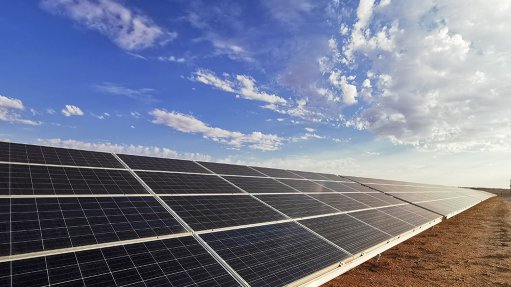I owe, I owe: JET
So, a partnership no more? To provide context, the National Treasury’s November 21 media statement is titled ‘Bilateral loan agreements with the World Bank, Germany’s Kreditanstalt für Wiederaufbau (KfW) and the African Development Bank (AfDB) to support South Africa’s just energy transition’, while the World Bank’s webpage, ‘Factsheet: Eskom Just Energy Transition Project in South Africa’, references the ‘Just Energy Transition Partnership’, or (JETP).
The World Bank states that “the JETP was established following a declaration at COP26 by the government of South Africa, with contributions from France, Germany, the UK, the US and the European Union, to mobilise $8.5- billion over the next three to five years to support South Africa’s energy transition plans”. What transition? Returning to the light?
Is ‘mobilise’ the political rebrand of a ‘begging bowl’? The latter is figuratively used in reference to a grovelling or obsequious appeal for financial help.
And now for the threequel, the third segment in my series of columns: ‘I owe, I owe’. Spoiler alert: there might be more sequels in the future. The first column appeared on February 11, 2022, and the second on July 8, 2022, and ended thus: “Let me acknowledge my self-plagiarism of the earlier column, in which I wrote: ‘The IMF, in the Article IV Mission, published on December 8, 2021, called on government to introduce a credible public debt anchor, which is defined as a government’s goal not to surpass a predefined debt ceiling over time.’”
If you thought that this column would be about the ‘credible public debt anchor’ – well, as with any threequel, be prepared to be disappointed, for no matter how hard you pray for it to be at least as bearable as the sequel, it never is.
As you are settling in for the threequel, again, let’s be clear – a loan is a form of debt; it has to be repaid. The National Treasury states in its November 21 media release: “South Africa has signed loan agreements with the World Bank, the government of Germany, and the AfDB for concessional financing to support the country’s just energy transition in line with the Just Energy Transition Investment Plan. The loans provided by KfW and the AfDB follow their partnership with the World Bank on the second Development Policy Operation to support South Africa’s commitment to the just transition for a low-carbon and resilient economy.
“These are sovereign loans provided directly to the National Treasury for general Budget expenditure purposes. The financing facilities from the three development institutions are in line with the National Treasury’s funding strategy to diversify its funding mix for international borrowing and access concessional financing instruments offered by the development partners to support government’s key reforms under climate change and the electricity sector. These facilities also enable the National Treasury to raise funding at very affordable rates, which help to reduce the government public debt. The National Treasury wishes to express its appreciation to the World Bank, KfW and the AfDB for their continued support to South Africa’s development objectives. These agreements signify and reinforce the excellent collaborative efforts between the government of Germany, the World Bank and the AfDB and our government, that has ensured the successful conclusion of the loans.”
The South African government is borrowing $1-billion (R18.79-billion) from the World Bank; €0.50-billion (R10.27-billion) from the KfW; and $0.3-billion (R5.63-billion) from the AfDB. So, another R34.69-billion in debt.
But then, most alarmingly, and distressingly, ‘South Africa will borrow more, spend less to tackle revenue shortfall’ was the headline of a Bloomberg news story published on November 1 that stated that “gross debt is set to exceed six-trillion rands by March 2026”. To remind you, the current debt level is R5.05-trillion.
As I eluded to in the circumquel, Proverbs 22 verse 7 in the King James Bible states: “The rich ruleth over the poor, and the borrower is servant to the lender.” So, the World Bank rules in South Africa, while the northern hemisphere returns, seemingly, in a supporting role.
Comments
Announcements
What's On
Subscribe to improve your user experience...
Option 1 (equivalent of R125 a month):
Receive a weekly copy of Creamer Media's Engineering News & Mining Weekly magazine
(print copy for those in South Africa and e-magazine for those outside of South Africa)
Receive daily email newsletters
Access to full search results
Access archive of magazine back copies
Access to Projects in Progress
Access to ONE Research Report of your choice in PDF format
Option 2 (equivalent of R375 a month):
All benefits from Option 1
PLUS
Access to Creamer Media's Research Channel Africa for ALL Research Reports, in PDF format, on various industrial and mining sectors
including Electricity; Water; Energy Transition; Hydrogen; Roads, Rail and Ports; Coal; Gold; Platinum; Battery Metals; etc.
Already a subscriber?
Forgotten your password?
Receive weekly copy of Creamer Media's Engineering News & Mining Weekly magazine (print copy for those in South Africa and e-magazine for those outside of South Africa)
➕
Recieve daily email newsletters
➕
Access to full search results
➕
Access archive of magazine back copies
➕
Access to Projects in Progress
➕
Access to ONE Research Report of your choice in PDF format
RESEARCH CHANNEL AFRICA
R4500 (equivalent of R375 a month)
SUBSCRIBEAll benefits from Option 1
➕
Access to Creamer Media's Research Channel Africa for ALL Research Reports on various industrial and mining sectors, in PDF format, including on:
Electricity
➕
Water
➕
Energy Transition
➕
Hydrogen
➕
Roads, Rail and Ports
➕
Coal
➕
Gold
➕
Platinum
➕
Battery Metals
➕
etc.
Receive all benefits from Option 1 or Option 2 delivered to numerous people at your company
➕
Multiple User names and Passwords for simultaneous log-ins
➕
Intranet integration access to all in your organisation

















